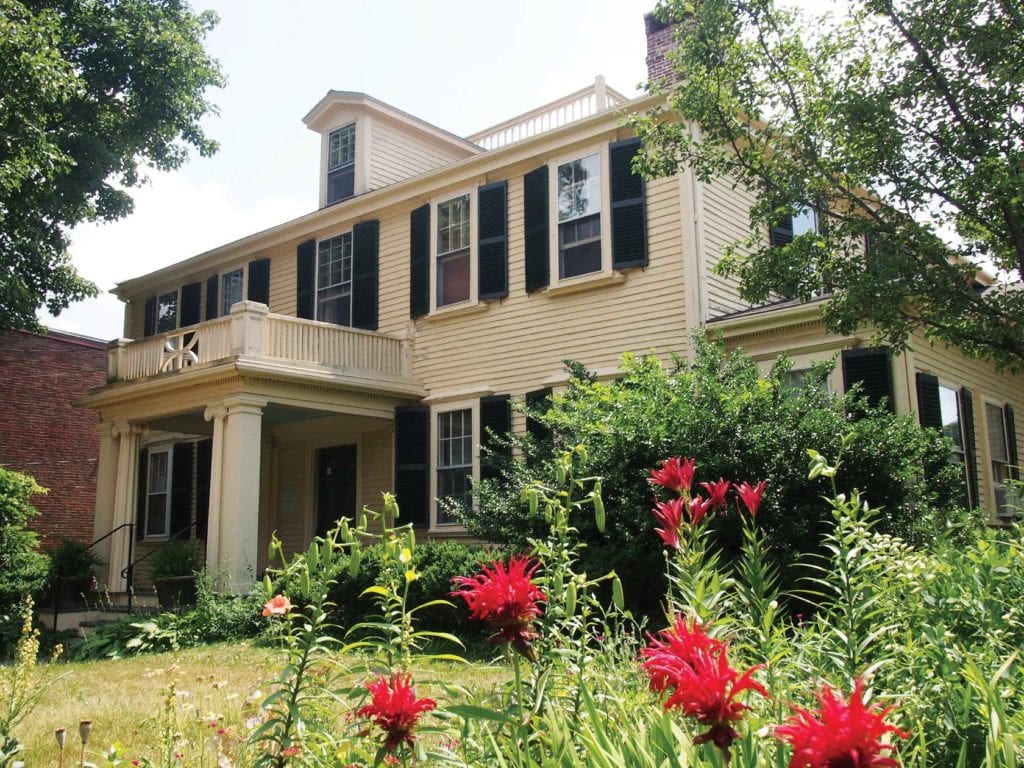Highland Park seeks historical designation
Locals are seeking protections for neighborhood’s architectural character

Earlier this month, Highland Park-Fort Hill residents launched a campaign to have the neighborhood designated an Architectural Conservation District by the Boston Landmarks Commission.

An example of Gothic Revival architecture on Cedar Street. Banner photo
Organizing into nine street teams, residents hope to gain widespread public support and backing from the Boston Landmarks Commission, in order to preserve the architecture and character of Highland Park, and to help neighborhood residents better manage real estate development in the area.
“It would give us a level of protection against the development we’re seeing in Highland Park,” says Rodney Singleton, a long-term Cedar Street resident.
New developments and real estate marketing tactics worry many residents, including Joyce Stanley. “It’s too bad that they’ve let folk go wild and develop any old thing,” she says.
“We’re not a second dorm for Northeastern [University] and we’re not Mission Hill East,” says Stanley, also a resident of Cedar Street. She believes that new luxury developments in the neighborhood are “driving out middle class families, replacing them with students, and perpetuating gentrification.”
The Architectural Conservation District designation would provide latitude for homeowners against developers’ plans, and give residents greater powers in determining whether projects are in keeping with the character of the neighborhood.
Rosanne Foley, executive director of Boston Landmarks Commission says “[they] are eager to work with the community to continue the process to designate Boston districts of historical, social, cultural, architectural, or aesthetic value.” She says they have “met with representatives for the Highland Park designation and are assisting in their next steps to continue that process.”
Application requirements
According to legislation, the application must meet several requirements. One guideline states that a successful application may prove that buildings in the area have historical significance, or represent a vital element of the city’s cultural, political or social character.
Many residents believe the former St. James African Orthodox Church at 50 Cedar Street meets this stipulation. Following an online petition that received more than 2,600 signatures, the commission is currently investigating whether or not the church can be deemed a historic landmark, saving it from demolition by the building’s new owners, City Realty Group.
In the 1990s, some Highland Park residents tried to rally the community behind efforts to have the neighborhood designated a Historic District, but many felt the proposal placed too many limitations on the types of home improvements they could make.

A Greek Revival home was demolished on this Hawthorne Street site to make way for new construction.
When an area is classified as a Historic District, accompanying regulations can add substantially to the cost of routine maintenance, including roof repairs and fencing.
In the South End Landmark District, for example, homeowners are prohibited from installing vinyl windows and must replace any damaged frames with ones made from traditional materials, often expensive wood.
According to the online home improvement provider, HomeAdvisor, the average cost to replace a window in Boston ranges from almost $2,500 to more than $7,000, with wooden frames at the far end of this scale. Added to this cost are the commission’s application fees, which must be paid in order to have any repair or construction plans approved. These start at $25 and can go as high as $5,000 depending on the work needed to the protected property.
“We don’t want to be in a situation where we force out our neighbors because they can’t afford to do the work” says Singleton, “we’re going for the not-so-intrusive option which allows for flexibility.”
Architectural Conservation District status would give residents some flexibility over changes they wish to make to the exteriors of their properties. As Kathy Kottaridis, executive director of the real estate preservation and management non-profit, Historic Boston Inc. says “It’s not meant to set a neighborhood in amber…It’s meant to manage change in relation to a community’s character.”
Historic Boston Inc. recently renovated the Alvah Kittridge House, the Alvah Kittridge Park Rowhouses and the Spooner Lambert House in Highland Park. The architectural history of the Highland Park neighborhood dates back to the 18th century, with some homes, such as the Dillaway Thomas House and the Spooner Lambert House, pre-dating the American Revolution. Later, Federal style homes, like 88 Lambert Avenue, built in 1794, were added to the neighborhood, followed by examples of Greek Revival architecture in the early 1800s, and Italianate and Gothic Revival homes in the mid-1800s. Before the end of the 19th century, Second Empire and Queen Anne Victorian style houses were added to the mélange of architectural styles in Highland Park.

A Queen Anne Victorian on Beech Glen Street
Beside the buildings, the community in Highland Park has evolved over time, yet residents like Stanley, hope to hold on to the traditional one- or two-family homes, with plenty of parking and yard space. This, she feels, will help preserve a higher quality of life for residents, and avoid “stuffing people into cheap units.”
“There should be the same protections [in Highland Park] as there is in West Roxbury, to preserve it as a neighborhood that has quality of life,” says Stanley, “we have a right to quality in our neighborhood too.”






